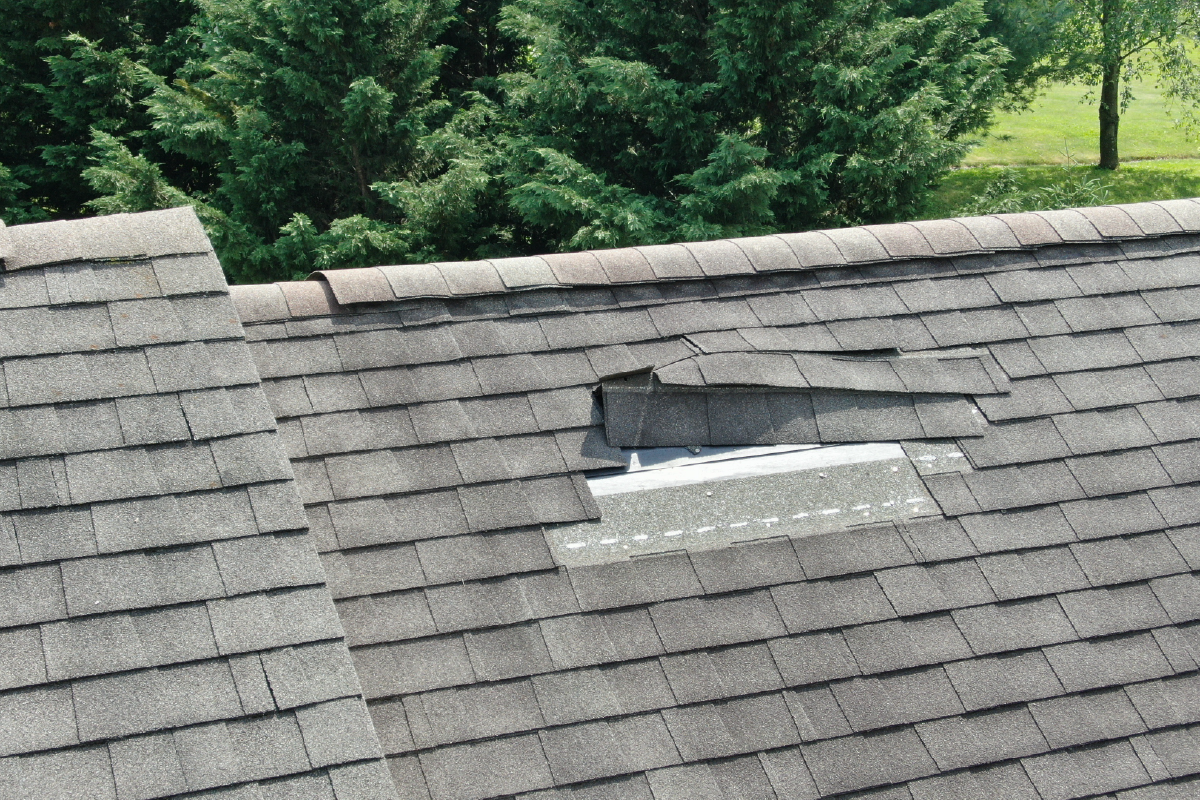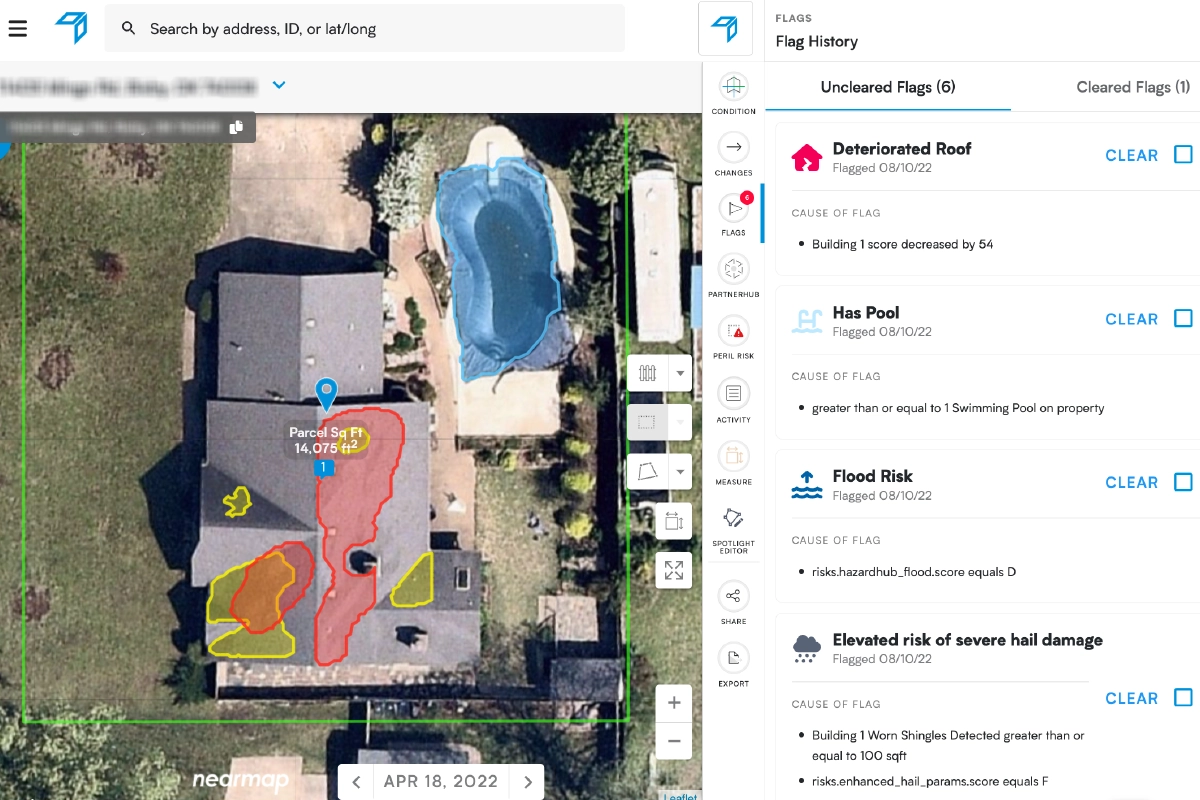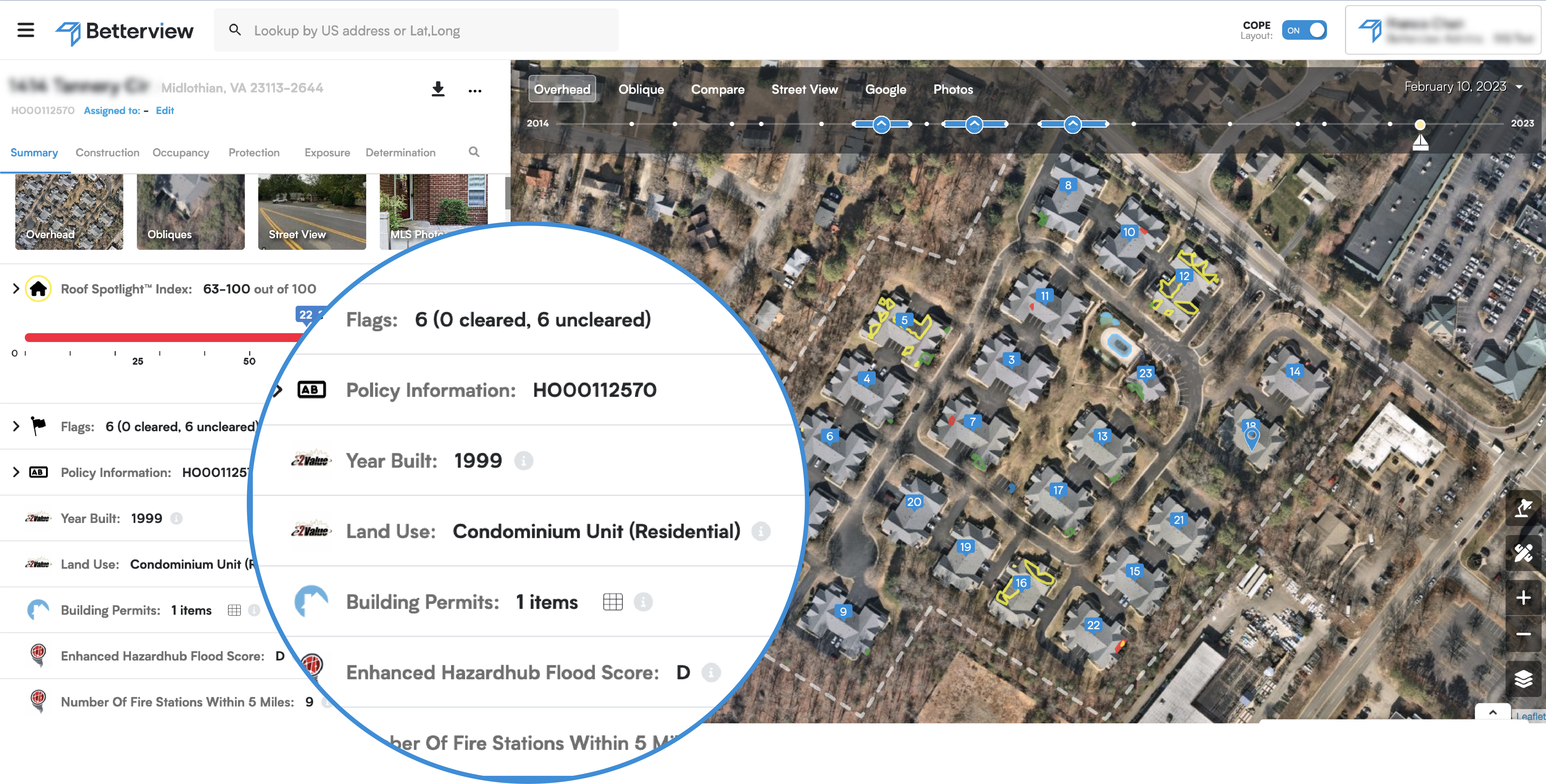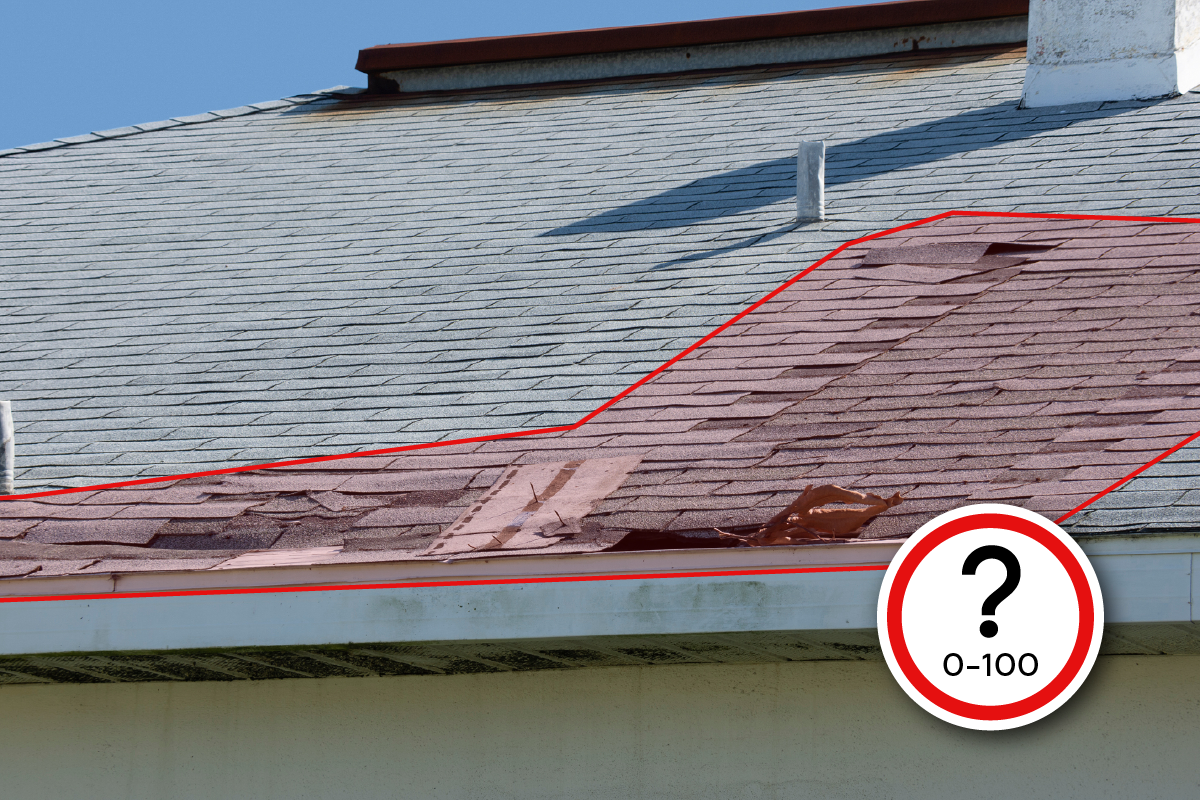How can Property Intelligence Help You Manage Risk?
Why do P&C insurance companies need property intelligence? That is what this series of blog posts has attempted to answer. First, we discussed how...

In our last blog post, we posed a significant question: what is property intelligence? Though the term carries many meanings, it can be generally understood as any and all information relevant to determining a property’s level of risk. This could refer to big-picture data such as regional weather patterns, or insights specific to a single structure such as a numerical roof score. A particularly useful form of property intelligence for the modern P&C insurer includes geospatial imagery augmented with artificial intelligence and computer vision. This type of property intelligence is prominently featured on the Betterview platform and will take center stage as we discuss how insurers can use it to analyze risk.
Risk analysis refers to all of the ways in which insurers identify real risk drivers on a property and determine to what degree they contribute to overall risk. This process strengthens every moment of the policy lifecycle. Quotes are more accurate, underwriting is more efficient, and loss control becomes more effective when insurers genuinely understand risk. Traditionally, insurers have used a combination of imagery, inspections, and actuarial data to inform this understanding. Property intelligence augments these methods of risk analysis while also adding new tools.
First, property intelligence tools powered by AI can spotlight risk drivers that escape the naked eye or are missed during a physical inspection. Starting with high-quality geospatial imagery (read here to learn why Betterview believes aerial imagery is the right choice), computer vision models detect instances of tree overhang, defensible space, missing shingles, and dozens of other possible property attributes. Particularly helpful are attributes related to roof condition; upwards of 40% of loss dollars are paid out for roof-related claims, and roof condition is a strong indicator of overall property condition. Whereas physical inspections often struggle to account for roof condition, a property intelligence platform can tell you everything you need to know about every roof in your book.
Second, property intelligence can take these detections and produce additional insights from them – insights relevant to an insurer’s specific business needs. This is how property intelligence goes beyond mere risk identification and enters the domain of risk analysis. For example, say an insurer is writing policies in a region with a high risk of wildfire activity. They are particularly interested in those attributes which contribute to overall wildfire risk, such as the state of defensible space. A property intelligence platform can identify how much defensible space surrounds every property. Then, this information can be combined with other detections such as roof material, condition, and age. The different detections can be weighed and scored, resulting in a comprehensive, actionable analysis of specific wildfire risk.
When you use property intelligence tools to move from risk identification to risk analysis, you can optimize every stage of the policy lifecycle for both accuracy and efficiency. Here is a quick snapshot of what this looks like:
Risk analysis is one of the critical functions of property intelligence for P&C insurers. Beyond just identifying individual risk drivers, a strong property intelligence platform can weigh and evaluate the contributions of these attributes to overall risk. The next step, of course, is to take immediate, strategic policy action based on these analyses. In our next post, we will discuss how this analysis leads to the next function of property intelligence: scoring risk.

Why do P&C insurance companies need property intelligence? That is what this series of blog posts has attempted to answer. First, we discussed how...

The property & casualty insurance industry is undergoing a seismic shift. Many factors, including an increase in severe weather events and changing...

The future of P&C insurance lies in property intelligence. Consisting of a diverse array of datasets, tools, and insights, property intelligence...